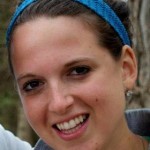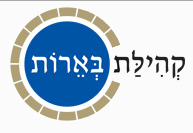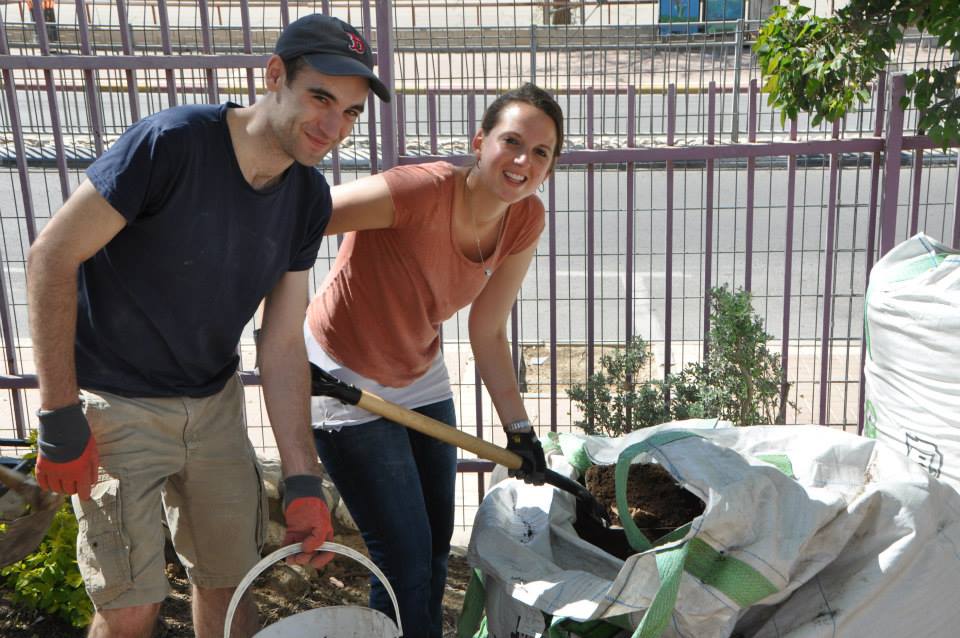Musings from Students of the Pardes Institute of Jewish Studies in Jerusalem
Posted on April 9, 2014 by Carolyn Gerecht
 A few weeks ago, an email came across my inbox (and probably yours, too) from David Levin-Kruss.
A few weeks ago, an email came across my inbox (and probably yours, too) from David Levin-Kruss.
“Ask me about this great opportunity to do Shabbat in Beer Sheva,” read the subject line. “City of Abraham, City of Opportunity.”
I read it and figured, “Yeah, why not?” I had never been to Beer Sheva before, and am always interested in opportunities to get to know Israel outside of Jerusalem. And Andrew Shapiro Katz (Kollel, PEP 2001-03), who organized the weekend alongside his wife, Emily (Faculty, Summer ’06), currently works for the new Negev campus of the Alexander Muss High School in Israel, which I wanted to hear more about. Emily works for the “Go South!” program of Nefesh b’Nefesh, which also peaked my curiosity.
So, intrigued, I signed up for the trip and packed my bag.
Over Indian food on our first night, Emily asked us each of us to go around and say a sentence or two about why we came on the trip. “Interested in the community here,” one fellow student said. “It seems like the kind of place I see myself in ideologically,” said another.
 My ears lifted. Yes, I had read in the email that Andrew and Emily had moved to Beer Sheva a few years earlier to create a new partnership minyan and religious community there, for other olim and Israelis, which is called Kehilat Beerot.
My ears lifted. Yes, I had read in the email that Andrew and Emily had moved to Beer Sheva a few years earlier to create a new partnership minyan and religious community there, for other olim and Israelis, which is called Kehilat Beerot.
But what I did not know – and learned over the course of the weekend – is what an incredible job they did with that task.
We wined and dined downtown on Thursday night; we took a tour of the beautiful Old City on Friday and spent some time shopping in the shuk. Beer Sheva is a lively, and attractive city, with lots of delicious food, interesting shops, kind people, and a diverse culture centered on the university there.
Yet by far the most impactful experiences of the trip, for me, were my interactions with the minyan that Andrew and Emily had formed there.
On Friday night and Saturday morning, about 60-70 people filled the space, divided by a mechitza but with opportunities for both women and men to lead different sections of the services. The podium moved back and forth between the men’s to the women’s sides, depending on the shaliach / shlicha tzibur. The mechitza itself, a flimsy, transparent piece of fabric nearly ceiling-high, was pulled away for the Torah service on Saturday.
Demographically, half of the families are olim, and half are people raised in Israel (a mix of children of Israelis and children of olim). More than a few of the adults work at the university, and there are many young families with children; but students, couples who don’t have kids and seniors represent nearly half of the community. Most of the kids attend school together nearby, with parents from Kehilat Beerot helping each other with child care, carpool, and class activities.
As we munched on Kiddush together on Saturday morning, I was struck by how extraordinarily happy, warm, and spiritually satisfied this “intentional community” of Kehilat Beerot seemed to be. Their community felt very much like a team effort, like a large group of friends with similar ideological preferences and shared community goals – which they were. Except that they had only known each other a few years. The bonds already created between these families truly inspired me, and got the wheels turning, so to speak.
During Seudah Shlisheet, on our last afternoon there, we had a chance to ask the members of this minyan about the task of building their own community, the challenges they face, and what has made them so successful.
In addition to excellent davening, cultural programming, and hard work, they commented on the fact that their minyan includes many faculty from the university – “people who work in universities tend to be innovators and doers, they tend to think creatively,” someone said. The response partially answered the questions I had about Andrew and Emily’s decision to begin this minyan in Beer Sheva.
In creating their new community, Kehilat Beerot was cautious and careful about pulling potential members away from their existing ”homes”. “If we offered davening every Shabbat from the beginning,” someone said, “we knew people were just as likely to never come to us as they were to always come to us.” And so, for the first few years of its existence, Kehilat Beerot davened together only biweekly. They planned consciously for new members to make a comfortable transition, or even to maintain their connections with other communities, another insight which stuck with me.
These days, Kehilat Beerot is working hard to expand to include more university students, Israelis, and families. “We are far from the university, so that is a challenge,” someone said. “But we are doing things to attract more Israelis – no long announcements or sermons in English, keeping the mechitza high.”
Now, as many of us begin to think about “life after Pardes” (what does “after Pardes” really mean, anyway?), we’re often excited by the question, “What can I take with me back home?” But then we might be slowed by questions like “But where do I go?” and “How do I do it?”
Andrew, Emily and the other members of this young minyan showed us some of the answers. Reach out to others – think critically and creatively – be deliberate in what you offer, and do it well. “You must plant the seed,” Andrew told us as we left. “But plant it in a place where it can grow.”
Thank you to Kehilat Beerot for sharing some of your sun with us.
